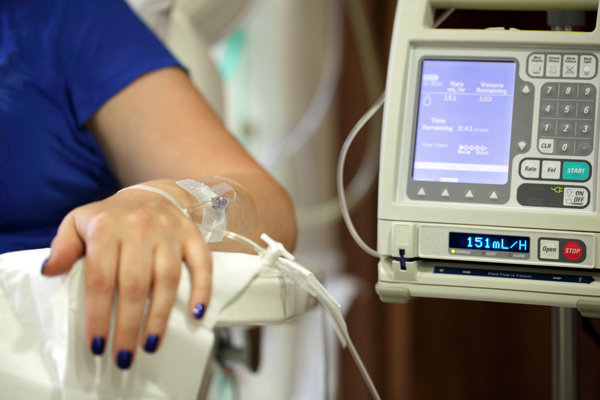Adult patients with chronic liver disease who will be undergoing a medical or dental procedure can now be treated using Dova Pharmaceuticals’ Doptelet (avatrombopag) thanks to a recent FDA approval. Doptelet treats low blood platelet count – known as thrombocytopenia – and is the first US-approved thrombopoietin (TPO) receptor agonist for an indication in chronic liver disease patients.
“We are delighted FDA has approved Doptelet, which represents a significant milestone for Dova, physicians, and most importantly, patients,” said Alex C. Sapir, President and Chief Executive Officer of Dova. “Doptelet is the first orally administered treatment option for patients with [chronic liver disease], allowing the majority of patients to avoid a platelet transfusion prior to a procedure by increasing platelet counts to the target level of greater or equal to 50,000 per microliter. Given our extensive preparations to date, we are positioned to launch Doptelet in June with our full complement of sales, marketing, and reimbursement support resources.”
Patients with chronic liver disease display varying levels of liver damage which contributes to decreased production of thrombopoietin, a hormone which regulates blood platelet formation in the bone marrow. Since these platelets are necessary for the blood clotting response which controls bleeding, patients with chronic liver disease often develop thrombocytopenia.
“Given the need for patients with [chronic liver disease] to routinely undergo multiple, invasive procedures, the availability of an oral agent that can lead to a measured increase in platelets, to minimize the need for platelet transfusions and risk of bleeding, will facilitate the clinical management of these patients,” said Dr. Norah Terrault, Professor of Medicine at the University of California San Francisco, Division of Gastroenterology, and Principal Investigator for the Phase III pivotal avatrombopag trials.
In all, 435 patients with chronic liver disease and thrombocytopenia were enrolled in Dova’s two Phase III studies for Doptelet, ADAPT-1 and ADAPT-2. All patients included in the trials were scheduled to undergo a medical procedure for which patients would likely require a platelet transfusion.
Patients were treated with either 40 mg or 60 mg of Doptelet orally for a duration of five days. Compared to the placebo group, patients given Doptelet showed higher platelet counts and did not require platelet transfusion up to one week after undergoing their procedure.
“Patients with chronic liver disease who have low platelet counts and require a procedure are at increased risk of bleeding,” said Dr. Richard Pazdur, director of the FDA’s Oncology Center of Excellence and acting director of the Office of Hematology and Oncology Products in the FDA’s Center for Drug Evaluation and Research. “Doptelet was demonstrated to safely increase the platelet count. This drug may decrease or eliminate the need for platelet transfusions, which are associated with risk of infection and other adverse reactions.”
According to Dova, about 70,000 chronic liver disease patients have thrombocytopenia based on a platelet count of less than 50,000/µL. This means that, left untreated, these patients carry a higher risk of serious uncontrolled bleeding as a result of the up to three procedures they must undergo each year.
Dova is still awaiting the EMA’s response to their marketing authorization application for Doptelet. The company hopes to grab a few additional indications for the drug in the US, including in the treatment of chronic immune thrombocytopenia purpura – often developed after a viral infection – and chemotherapy-induced thrombocytopenia.











Join or login to leave a comment
JOIN LOGIN